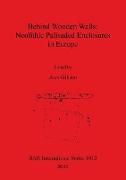This volume arises from a session at the EAA conference in Lisbon in 2000. Its aim was to draw together the new data from Europe on prehistoric wooden palisaded enclosures. Wood was important to early humans yet the rarity of surviving wooden objects from prehistoric contexts means that it is a rarely studied and often ignored medium. However and wherever these wooden remains are tantalizingly discovered, there is common concern across Europe of the lack of understanding on them. However, an increasing amount of work is taking place across Europe on Neolithic palisade enclosures, in particular, and the number of sites is expanding. These sites present their own problems with horizontal stratigraphy and phasing, as well as the more obvious considerations of dating and scarcity of internal features. Questions such as 'what were they for?' are likely to remain unanswered for some while, but it is hoped that the five papers in this volume (discussing sites from Ireland to Romania) as well as presenting a large body of new data, will go some way towards shedding some light on the study of these enigmatic structures.


